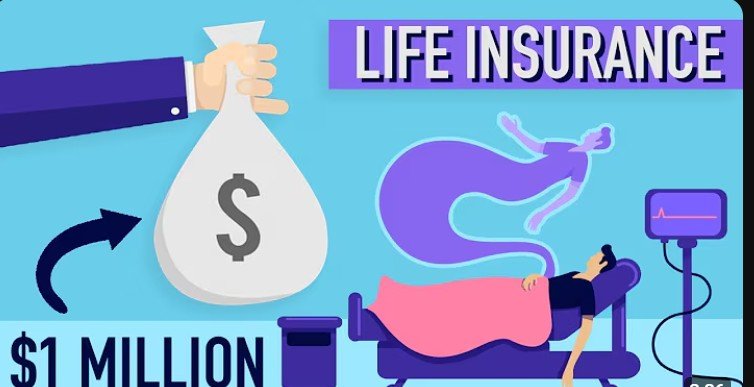Introduction
Life is unpredictable, but your family’s future doesn’t have to be. One of the most responsible financial decisions you can make today is investing in a life insurance policy. Whether you’re a young professional, a parent, or approaching retirement, life insurance offers critical financial protection to your loved ones when they need it most.
In this all-inclusive guide, we’ll cover everything you need to know about life insurance in 2025—its types, benefits, coverage options, common misconceptions, and tips for choosing the right policy for your needs.
Table of Contents
- What Is Life Insurance?
- Why Is Life Insurance Important?
- Types of Life Insurance
- Term Life Insurance: Features and Benefits
- Whole Life Insurance: Pros and Cons
- Universal Life Insurance Explained
- Variable Life and Indexed Universal Life Insurance
- How Much Life Insurance Do You Need?
- Key Components of a Life Insurance Policy
- Life Insurance for Different Life Stages
- How to Choose the Best Life Insurance Policy
- Medical Exams and No-Exam Life Insurance
- Life Insurance Riders: Customizing Your Coverage
- Life Insurance and Taxes: What You Should Know
- Common Myths and Misconceptions About Life Insurance
- Life Insurance vs. Health Insurance: Key Differences
- Benefits of Life Insurance Beyond Death Coverage
- Life Insurance for Business Owners
- Top Life Insurance Companies in 2025
- Frequently Asked Questions (FAQs)
- Conclusion
1. What Is Life Insurance?
Life insurance is a legal contract between a policyholder and an insurance company. In exchange for premium payments, the insurance company promises to pay a lump sum (called the death benefit) to beneficiaries upon the insured person’s death. This financial safety net helps families cover living expenses, debts, funeral costs, and long-term financial needs.
2. Why Is Life Insurance Important?
Life insurance is vital for several reasons:
- Protecting Loved Ones: Ensures your family is financially secure if you pass away unexpectedly.
- Covering Debts and Mortgages: Pays off any outstanding loans or mortgages.
- Supporting Children’s Education: Helps fund your child’s future education.
- Funeral and End-of-Life Expenses: Covers burial and medical bills.
- Estate Planning Tool: Helps in wealth transfer and minimizing estate taxes.
3. Types of Life Insurance
Understanding the different types of life insurance is key to choosing the right policy:
- Term Life Insurance
- Whole Life Insurance
- Universal Life Insurance
- Variable Life Insurance
- Indexed Universal Life (IUL)
- Final Expense Insurance
- Group Life Insurance
4. Term Life Insurance: Features and Benefits
What It Is:
Term life insurance provides coverage for a specific period—usually 10, 20, or 30 years.
Benefits:
- Affordable Premiums
- Simple and Straightforward
- Convertible to Permanent Policies
Ideal For:
Young families, first-time buyers, and individuals seeking low-cost coverage.
5. Whole Life Insurance: Pros and Cons
What It Is:
A permanent life insurance policy that provides lifelong coverage and builds cash value.
Pros:
- Lifelong Coverage
- Cash Value Accumulation
- Level Premiums
Cons:
- Higher Premiums
- Limited Flexibility
6. Universal Life Insurance Explained
A flexible permanent policy offering adjustable premiums and death benefits. Cash value earns interest and can be used for loans or payments.
Benefits:
- Flexibility in coverage and payments
- Tax-deferred growth of cash value
7. Variable Life and Indexed Universal Life Insurance
Variable Life:
Invests cash value into sub-accounts like mutual funds. Offers high growth potential but also higher risk.
Indexed Universal Life (IUL):
Earnings are linked to a stock index (e.g., S&P 500) but have guaranteed minimums, offering safer growth.
8. How Much Life Insurance Do You Need?
Use the DIME Method to estimate:
- Debt: Mortgage, loans, credit cards
- Income: Multiply by years needed
- Mortgage: Remaining amount owed
- Education: Children’s education expenses
A general rule: Aim for 10 to 15 times your annual income.
9. Key Components of a Life Insurance Policy
- Policyholder: Person who owns the policy
- Insured: Person whose life is insured
- Beneficiary: Recipient(s) of the death benefit
- Death Benefit: Lump sum paid upon death
- Premium: Payment made to maintain the policy
- Cash Value (if applicable): Savings element in permanent policies
10. Life Insurance for Different Life Stages
- Young Adults (20s-30s): Term life is affordable and protects against future liabilities.
- Parents: Protect children’s financial future with term or whole life.
- Middle-Aged Adults: Consider permanent life for estate planning and wealth transfer.
- Seniors: Final expense or guaranteed issue life insurance can be helpful.
- Business Owners: Use policies for key person insurance or buy-sell agreements.
11. How to Choose the Best Life Insurance Policy
Step-by-Step Guide:
- Assess Your Needs
- Determine Duration and Amount
- Compare Term vs. Permanent
- Get Multiple Quotes
- Read the Fine Print
- Check Insurer Ratings (A.M. Best, Moody’s)
- Consult a Financial Advisor
12. Medical Exams and No-Exam Life Insurance
Some policies require a medical exam, while others offer no-exam options for faster approval.
No-Exam Policies:
- Simplified Issue: Few health questions
- Guaranteed Issue: No questions asked; higher premiums
13. Life Insurance Riders: Customizing Your Coverage
Riders offer additional benefits. Popular options include:
- Accelerated Death Benefit Rider
- Waiver of Premium Rider
- Child Term Rider
- Guaranteed Insurability Rider
- Accidental Death Benefit Rider
14. Life Insurance and Taxes: What You Should Know
- Death Benefits: Generally tax-free to beneficiaries
- Cash Value Growth: Tax-deferred
- Loans: Tax-free if repaid
- Estate Tax: Applies if death benefit raises estate value over federal limits
15. Common Myths and Misconceptions About Life Insurance
- “I’m too young to need life insurance.” The younger you are, the cheaper the rates.
- “Only breadwinners need insurance.” Stay-at-home parents provide essential unpaid labor.
- “It’s too expensive.” Term policies can cost as little as $20/month.
- “I have coverage through work.” Group policies are usually insufficient.
16. Life Insurance vs. Health Insurance: Key Differences
| Feature | Life Insurance | Health Insurance |
|---|---|---|
| Purpose | Financial protection after death | Covers medical expenses |
| Benefit Payout | Lump sum to beneficiaries | Payments to healthcare providers |
| Duration | Term or lifelong | Renewed annually |
| Cost Structure | Based on age/health/coverage amount | Based on plan type and services |
17. Benefits of Life Insurance Beyond Death Coverage
- Wealth Transfer Tool
- Loan Collateral
- Retirement Planning via Cash Value
- Charitable Giving
- Business Continuity
18. Life Insurance for Business Owners
Key Benefits:
- Protect business partners and key employees
- Fund buy-sell agreements
- Provide employee group life insurance
- Serve as a financial safety net for business continuity
19. Top Life Insurance Companies in 2025
Here are some of the top-rated life insurance providers:
| Company | Best For | Highlights |
|---|---|---|
| Northwestern Mutual | Overall value | Highly rated whole life policies |
| Haven Life | Online term life | Instant quotes and no medical exam option |
| New York Life | Permanent policies | Strong dividends and cash value growth |
| Banner Life | Low-cost term life | Affordable premiums, great underwriting |
| Ethos | Fast digital approval | No exam for most applicants |
| State Farm | Customer service | Local agents and bundled discounts |
20. Frequently Asked Questions (FAQs)
Q: Can I have more than one life insurance policy?
Yes, there’s no limit to how many policies you can hold as long as you justify the need.
Q: What happens if I miss a premium payment?
There’s usually a grace period of 30–31 days. If still unpaid, your policy may lapse.
Q: Is life insurance worth it for a single person?
Yes, especially if you have debt, aging parents, or want to leave a legacy.
Q: Can I change my beneficiaries?
Yes, most policies allow you to change beneficiaries at any time.
21. Conclusion
Life insurance is not just a policy—it’s a promise. A promise to protect the ones you love from financial hardship when you’re no longer around. Whether you’re starting a family, running a business, or planning your legacy, life insurance provides a foundation of financial security and peace of mind.
In 2025, with more options and digital tools available than ever before, there’s no excuse not to find a life insurance plan that fits your budget and goals. Start planning today for a safer, more secure tomorrow.







